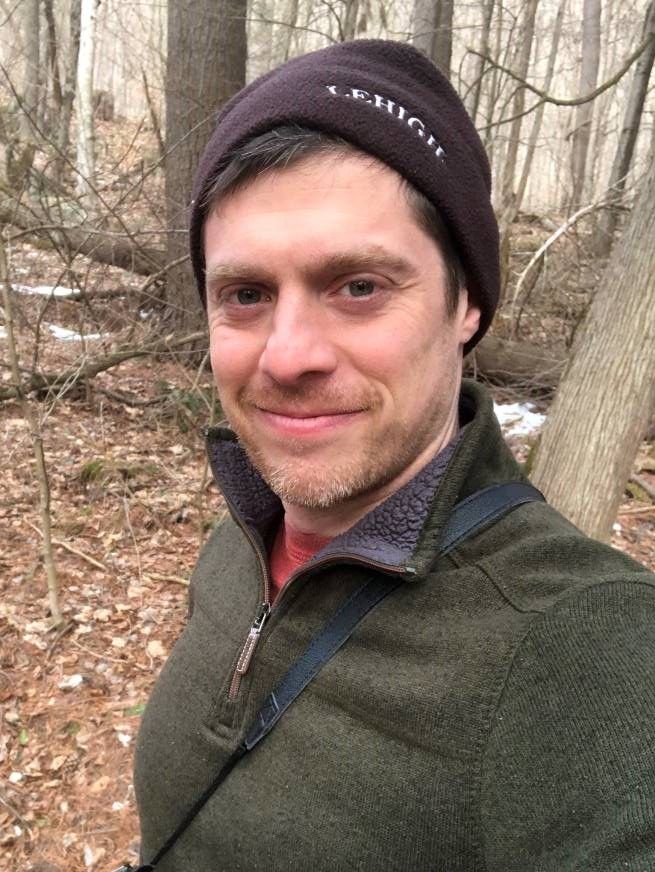With solid basics—and a Lehigh mentor in his corner—this materials science and mechanical engineering graduate tackles high-tech challenges in the aerospace, robotics, and autonomous vehicle industries
It’s rare for a college student to do unassigned homework just for kicks, and it’s even more unlikely that anything significant will come from it.
But that improbable crossroads is where Lehigh Engineering alum Matt Kampner ’05 ’07G had his lightbulb moment.
It was 2001, and Kampner was a first-year business major at Lehigh. A friend was wrestling with a physics assignment using the formula known as Snell’s law. Kampner decided to take a crack at it on his own, and ended up nailing the problem (as did his buddy).
“That’s when I realized I was in the wrong major,” the 38-year-old recalls. Physics had been one of the few subjects that had piqued his interest in high school, thanks to a teacher who “took the conceptual route and made it more concrete and interesting.”
Kampner changed his major to materials science and engineering, a discipline that not only incorporated physics, but satisfied his creative side. As a junior, he connected with another particularly effective teacher—one who opened his eyes to a new area of interest, mechanical engineering, and set him on the path to graduate school.
Kampner met Joachim Grenestedt, a professor of mechanical engineering and mechanics and director of Lehigh’s Composites Lab, while taking a two-semester Integrated Product Development course. Grenestedt is a big proponent of engineering fundamentals, says Kampner, which means his students must put pen to paper to work out computations.
“To be an engineer means that you have an understanding of how things work, and you use science and models to solve problems or to troubleshoot,” says Kampner. “What happens today is that computers are mistaken for problem-solvers. It turns out they’re just tools. It’s the person behind the computer resolving the problem.”
After completing his undergraduate degree in materials science and engineering, Kampner pursued his master’s in mechanical engineering, and continued under Grenestedt’s mentorship as a research assistant.
“The facilities that Dr. Grenestedt has built, makes it seem like working for a decent-size company with lots of resources,” he says.
Kampner graduated in 2007, and landed a job as a mechanical/materials and process engineer at Lockheed Martin in Baltimore. He soon put those engineering fundamentals to use.
“We figured out how to grow carbon nanotubes onto carbon fiber and glass fiber, which were then used in making laminated composites,” he says. “I had everything fresh in my head from Dr. G’s lab. There were definitely times when I had to go back to classic mechanics methods to show why spending the next week and a half testing this thing wasn’t going to work out. That required some rigorous calculations by hand.”
Grenestedt also influenced Kampner’s next career move. The professor had frequently mentioned Scaled Composites—an aerospace company based in California—in his introductory aircraft design course, which Kampner took as a grad student. In 2008, Kampner joined the company as a design engineer and served as lead engineer for the wing structure of the SpaceShipTwo, a spacecraft meant for tourism. He performed the same duties for the landing gear of the WhiteKnightTwo, which carries the SpaceShipTwo to its required launch altitude.
“That whole experience was some of the most interesting work I’ve done,” Kampner says. “Almost every piece of engineering I did there was rooted in fundamentals, and the people who I worked with, almost every single one, had a similar approach.”
Kampner also worked as a senior project engineer for The Spaceship Company, the SpaceShipTwo’s manufacturer. Since then, he has applied his skills in a range of industries such as RE2 Robotics, Uber, and Aurora, where he now handles systems engineering for the self-driving tech company.
“A good systems engineer typically has experience in one or two specific fields and has seen multiple project life cycles,” he says. “It’s a higher-level view of the problem. It’s critical on projects with high complexity because you can no longer rely on groups of people to always have the system level context in their minds.”
Occasionally, Kampner will email Grenestedt about those projects, and the pair will talk shop when they meet up in person every year or so.
“I feel like if I were retired and living closer to Lehigh,” Kampner says, “I’d probably want to hang out and work pro bono in his lab if he’d let me.”
—Chris M. Junior is a freelance contributor for the P.C. Rossin College of Engineering and Applied Science


